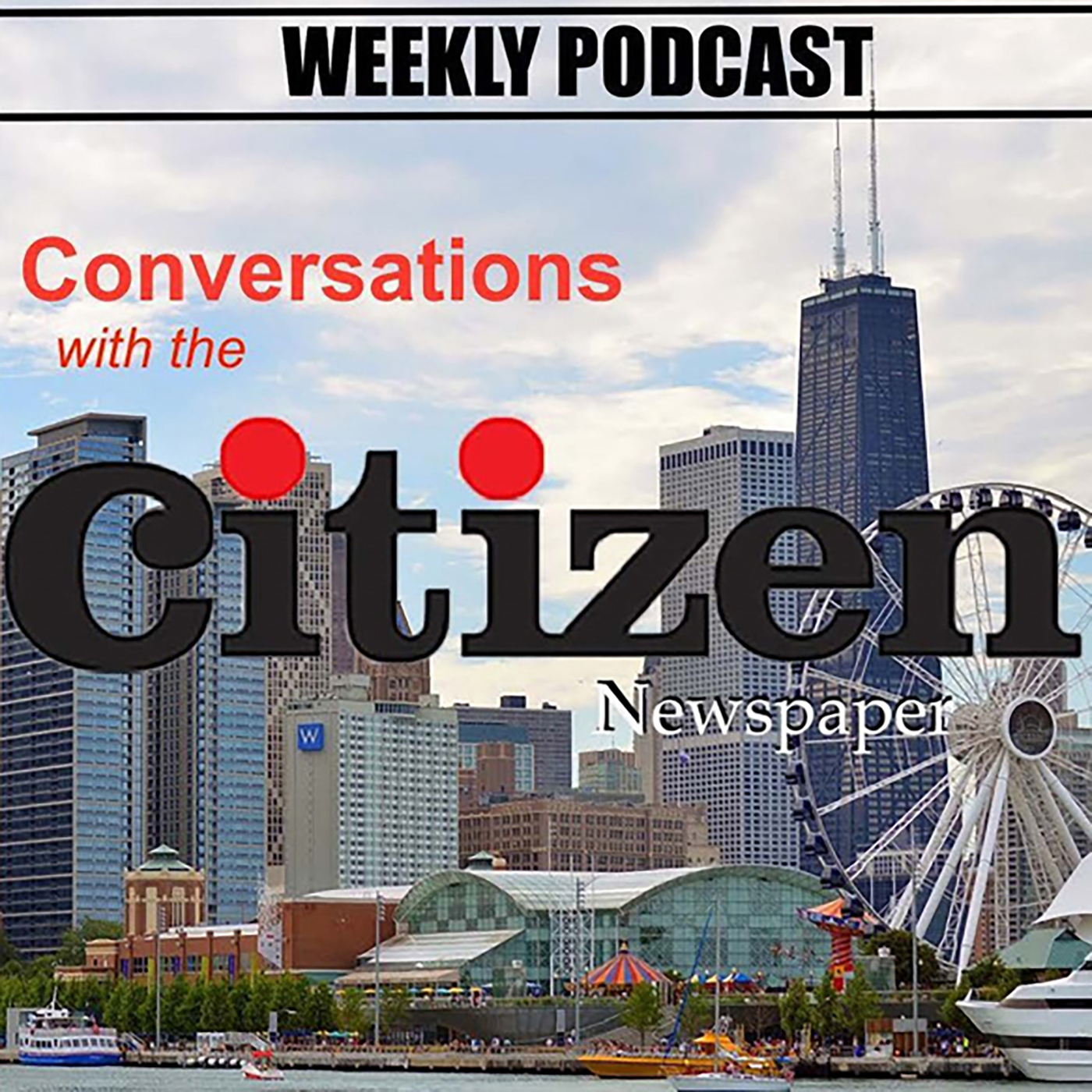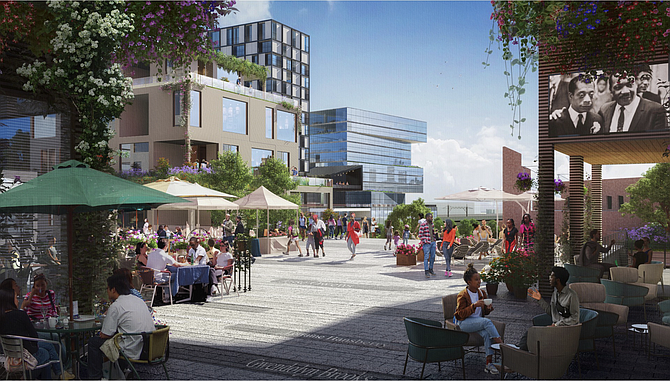An update on the Woodlawn Central Plan
The Woodlawn Central Master Plan seeks to turn parts of the community in places for performing arts, agriculture, technology, visual arts and retail. Image provided by J. Byron Brazier.
The Woodlawn Central Master Plan was created as a part of a 2060 Plan by J. Byron Brazier. The plan was approved by the City of Chicago Department of Planning and Development. Brazier took some time to speak with the Citizen Newspaper and give an update on the progress of the plan.
Citizen Newspaper: When we spoke in December 2021, you talked about how the Woodlawn Central Plan was going to create a cultural destination in Woodlawn. Where are you in the development process of Woodlawn Central?
J. Byron Brazier: The Woodlawn Central team drafted and posted a site plan to build 870 housing units, along with an office, hotel, and performance spaces. Also, a gateway Metra facility to supply continuous economic benefit without displacement. The team is preparing the detailed plans needed to gain city approvals and realize our sustainable development vision.
CN: How are you prioritizing local residents in the development of Woodlawn Central?
Brazier: Frankly, there are few models for building a successful and complete Black community. There’s an immediate need for housing, jobs and business opportunities. But we’re also building an enduring economic asset that will contribute to the community’s health, safety and prosperity. Most Black neighborhoods lack the resources to thrive and the information to negotiate with financial partners as equals. So, we are engaging early adopters in the Woodlawn community who can inspire regenerative ideas and engage consistently in the development process.
CN: Why is it so important that things like equity and support for Black businesses, creators and innovators are at the forefront of this development?
Brazier: Woodlawn Central is designed by and for the Black community to support a diverse range of Black businesses, creators, innovators and residents through self-determination. Black creators are experts in collaboration, fluent in our cultural legacy and accustomed to taking risks. Their innovations will make Woodlawn Central more dynamic and accessible.
CN: How have you been able to get buy-in from the community and businesses to support the plan to develop Woodlawn Central?
Brazier: The Woodlawn community was involved in the OneWoodlawn plan that became the foundation of Woodlawn Central. We adopted the four pillars of a healthy community that community members named in the Network of Woodlawn comprehensive plan: economic and community development, safety, education and health and human services. As we proceed in the development process, a community newsletter and an advisory group are helping us work within that framework. Residents need to see themselves in what comes out of the planning process. We will call on the community to validate and support our vision as reflecting their vision.
CN: What has been the biggest obstacle in moving the plan forward and how have you been able to overcome that obstacle?
Brazier: Investment dollars are always a constraint and therefore an obstacle in real estate development. Woodlawn Central is attracting public and private investment in its early stages. We want to engage Black entrepreneurs who want to do well by doing good in the community, as well as public and private institutions that want to invest in a fresh approach to economic development from the inside out. But make no mistake, financing will be a high hurdle to clear before we can turn even one shovel of dirt.
CN: Who has been some of your biggest supporters of the project and how have they helped move the Woodlawn Central Plan forward?
Brazier: We are blessed to have members of the Apostolic Church of God, Representative Kam Buckner, Senator Robert Peters, Speaker of the House Chris Welsh and the administrations of the South Side YMCA, Preservation of Affordable Housing (POAH), and Network of Woodlawn walk with us in planning this project and recommend how to attract Black capital and display Black excellence. Our discussions with architects and planners also give us insight into planning and permitting, which frankly trips up many community development projects.
CN: How will development of Woodlawn Central serve as a national model for the restructuring of Black communities?
Brazier: Few cities have been able to employ community resources to develop regenerative assets that supply affordable and sustainable growth. Woodlawn Central will show how the right mix of workforce, market rate, senior and affordable housing combined with hospitality and office space will support families without displacing them. And it can show how development by us and for us can succeed at empowering the community where solutions imposed from outside fail.
CN: Is there anything else you’d like our audience to know about the project or the process of developing Woodlawn Central?
Brazier: A large, well-planned development is a tremendously complicated undertaking. We are barely into the pre-development stage, and we will look for opportunities throughout the process for the community to take part. So, we appreciate their patience. This is the time for business leaders to make introductions and commitments that will bear fruit in due time. Success will require all of us to pool our resources and flex our creativity.
For more information about the Woodlawn Central Development Plan, visit https://www.woodlawncentral.com.
Latest Stories
- Cook County Clerk and Chicago Bears Launch Historic High School Early Voting Program
- OWN ANNOUNCES MAXXED OUT: A BOLD NEW FINANCIAL INTERVENTION SERIES PREMIERING JANUARY 10, 2026
- More than 1,500 seniors walk the red carpet at 42nd annual CHA Senior Gala
- Hanna Andersson and Oeuf Launch a Pajama Collaboration Inspired by Quality and Whimsical Design
- A$AP Rocky Partners with Bilt to Drop Exclusive Member Vinyl and Launch "Rent Free" Campaign
Latest Podcast
Wendy Thompson-Friend Health

